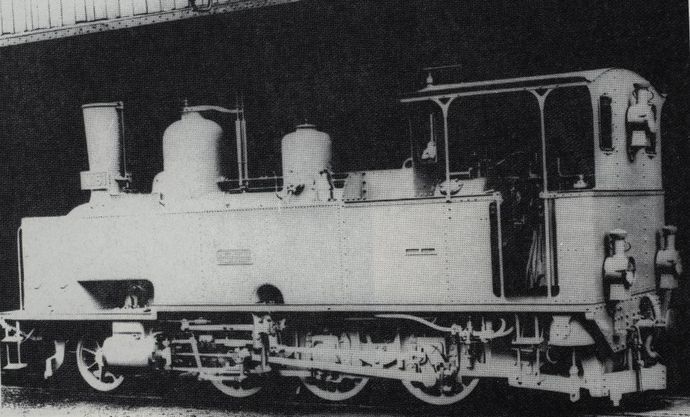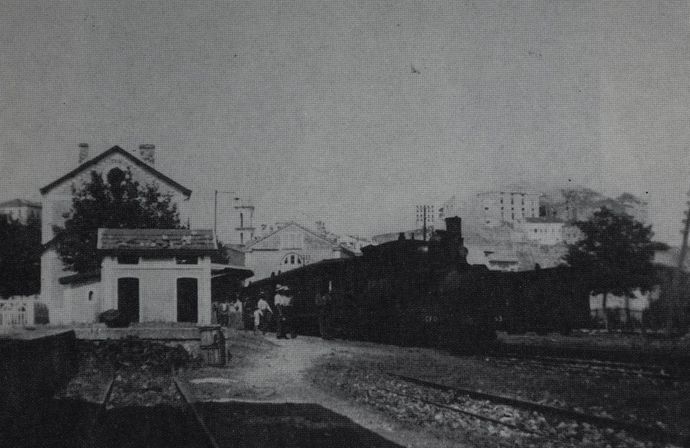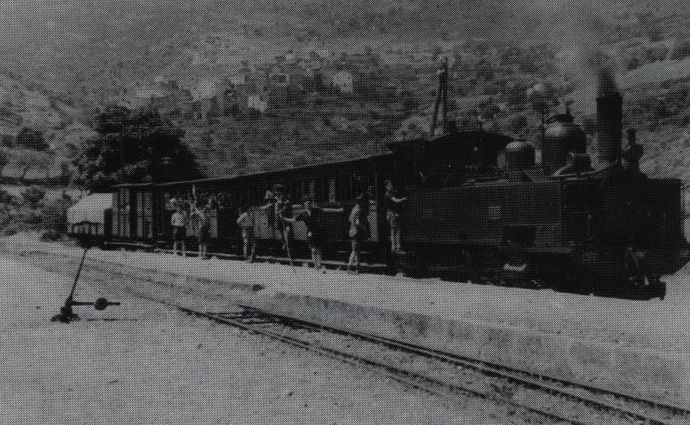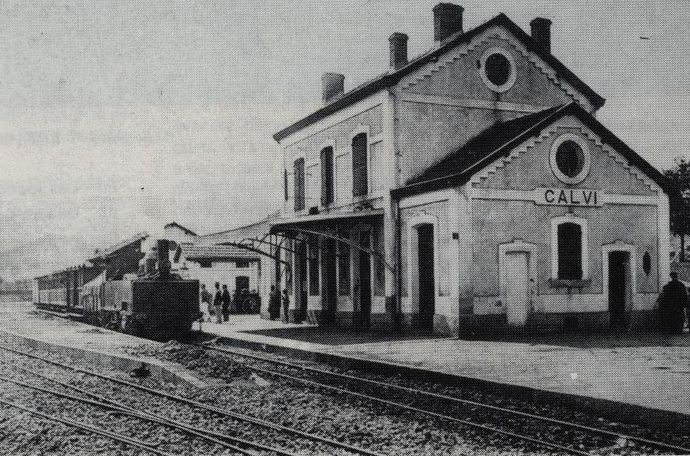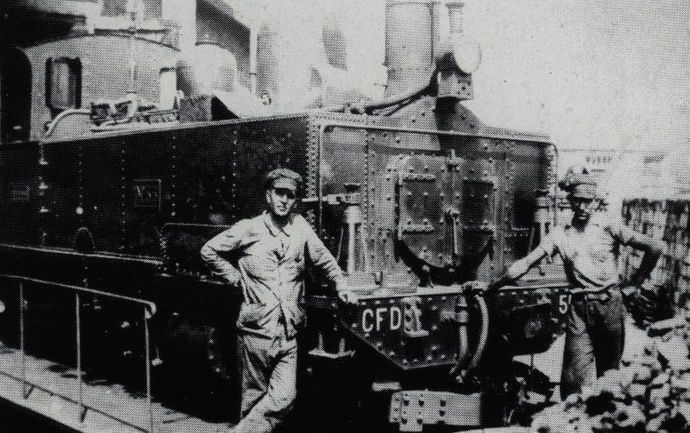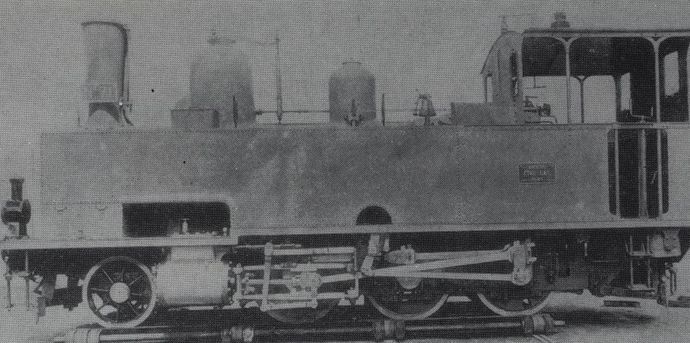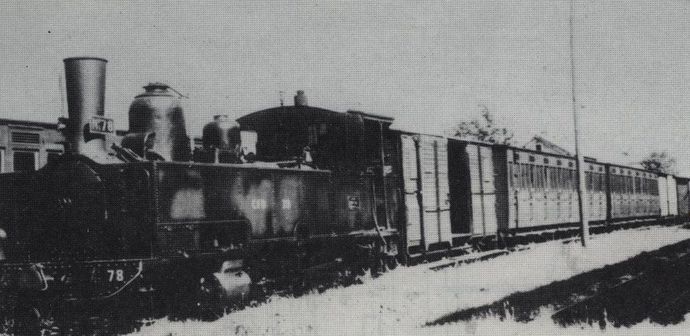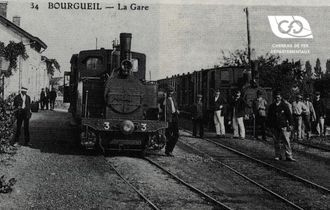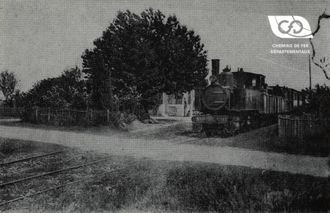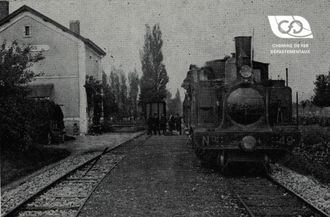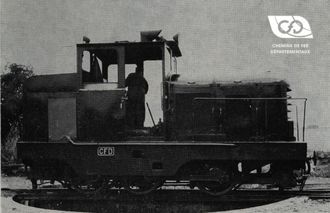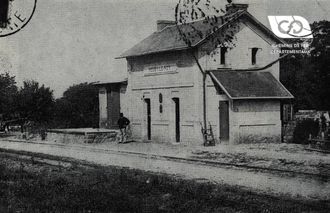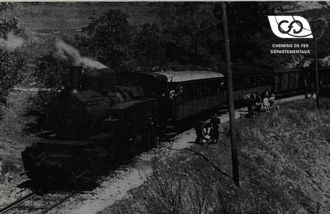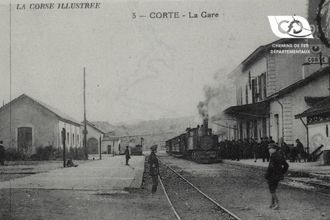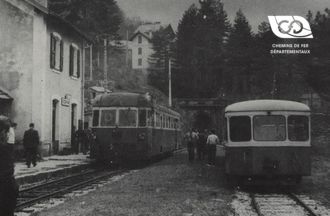These machines had to be able to sustain high speeds on difficult routes and to pull loads that could exceed 60 t. The construction of the 10 units planned to arm the three lines of this network was entrusted to the Fives-Lille workshops in Fives (Nord).
Thereafter, because of the good behaviour of these machines, the equipment of the general interest network of Charentes and Deux-Sèvres motivated the order of 11 additional machines , practically identical, at Ets Cail in Denain (Nord).
The Fives-Lille locomotives of the general interest type
Description of the Fives-Lille locomotives
The manufacturer's Type 102 machines had the same general arrangement as Type 49 (chassis outside the wheels, last axle driven by the driving rod, dome on the first shell supporting the balance valves, Walschaert distribution), but a larger boiler had been installed. Thus the heating surface had been increased by the installation of 131 tubes of 3.10 m in length instead of 113 of 2.80 m. The smoke box door was double-leafed. The dimensions of the cylinders were significantly increased. The diameter of the driving wheels was increased from 0.900 to 1.000 m. The wheelbase had been increased to 4,200 m and the length over the buffers to 8,050 m. The water tanks had been extended to the front of the 1,400 I cylindrical body. In addition, the capacity of the fuel bunkers had been increased from 1,000 to 1,100 kg. As a result, the operating weight was increased from 22.8 t to 28.5 t.
The shape of the shelter was identical to that of the 28-41 series in Corsica. After a few years of use, the cabin was partially closed, either by a canvas or by means of a sheet metal plate.
A handrail, following the shape of the front of the machine, was fixed at the end of the water boxes.
The machines were painted black and the bumper bars were painted red. The latter were marked in white letters, on the left with the C.F.D. and on the right with the engine registration. In addition, a small plate, attached to the base and on each side of the chimney, bore the words "No." and the locomotive registration. On the water boxes only the rectangular builder's plate had been attached in the middle.
As they passed through the G.R., the boilers were modified by installing round smoke box doors, giving these locomotives a more modern look.
